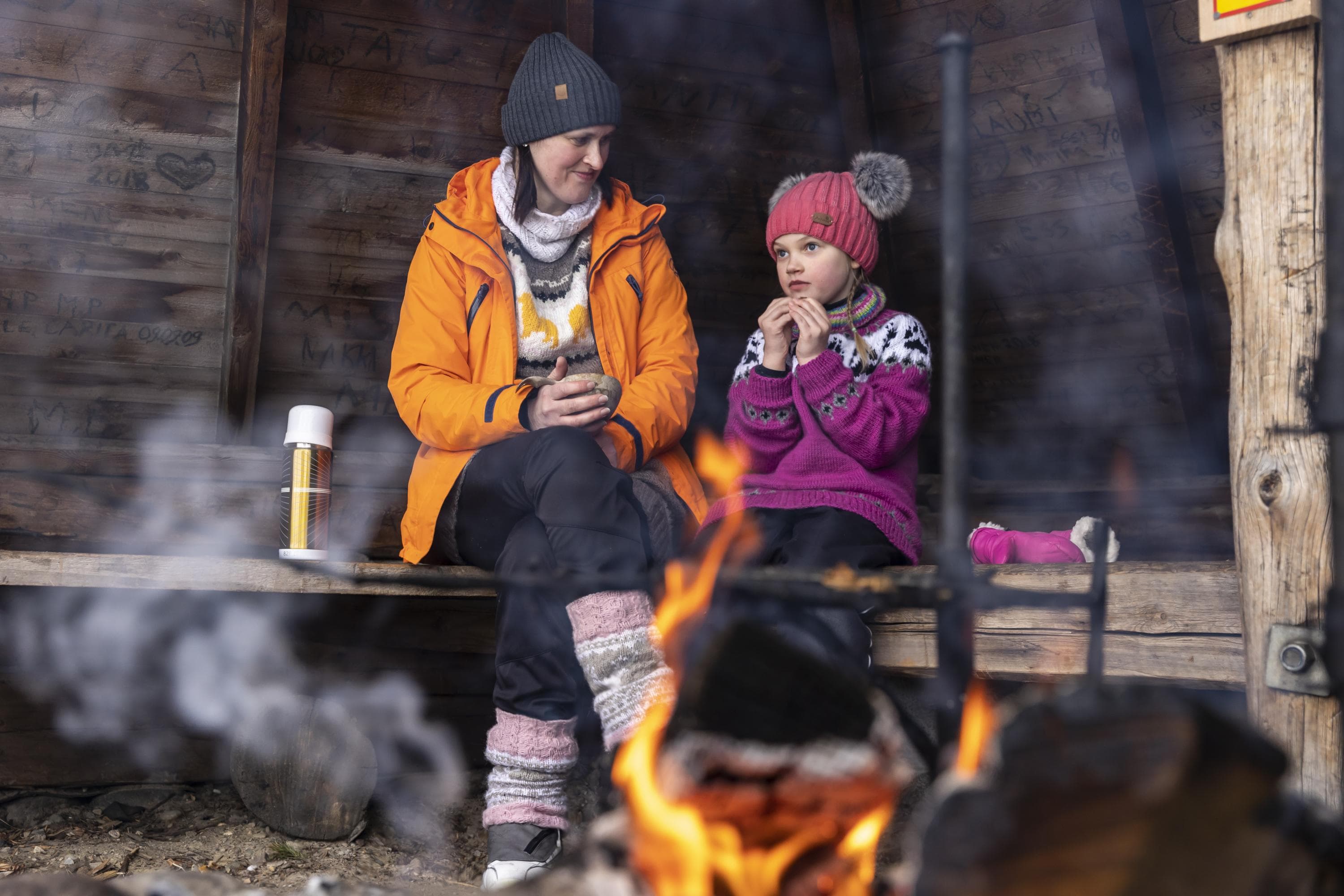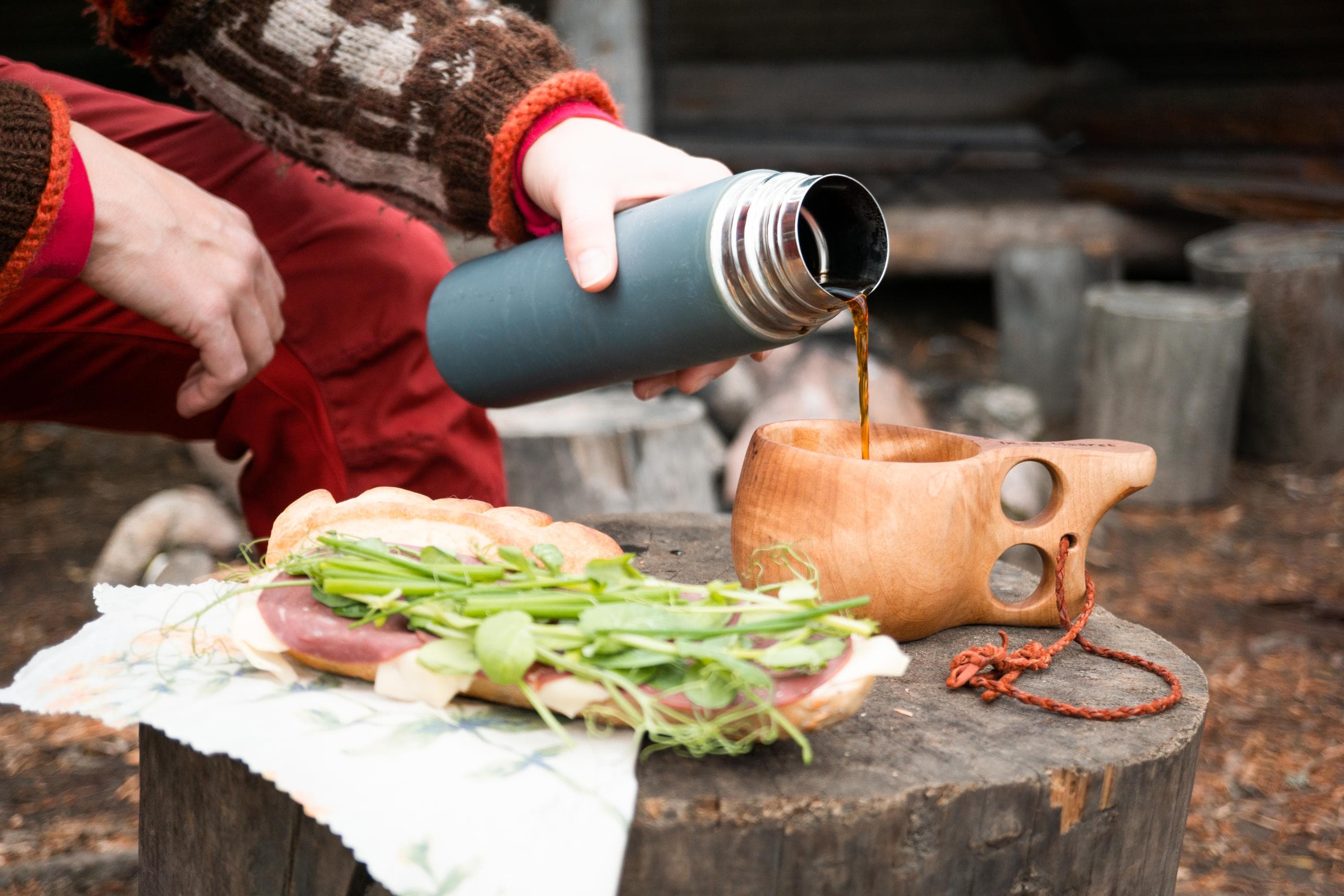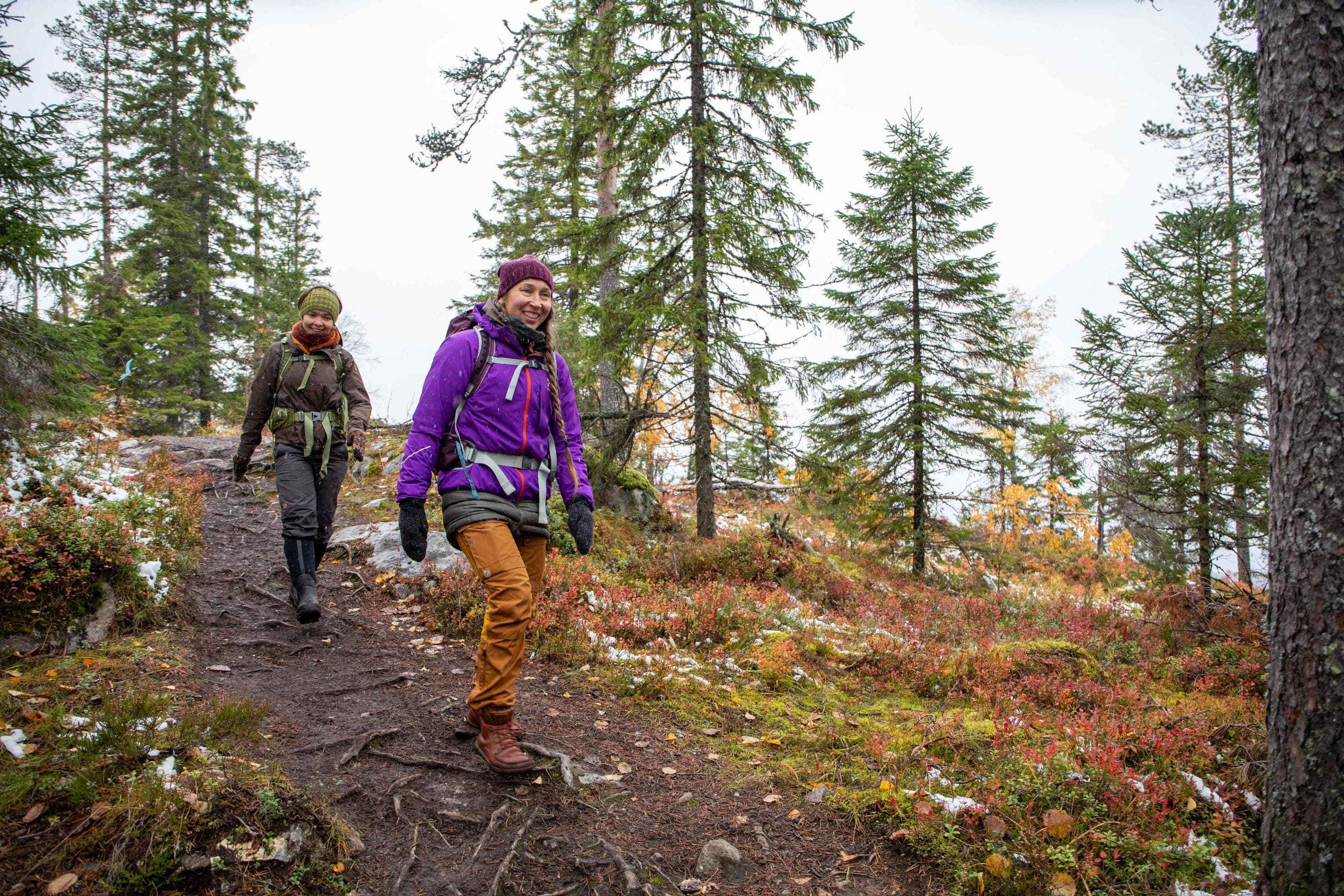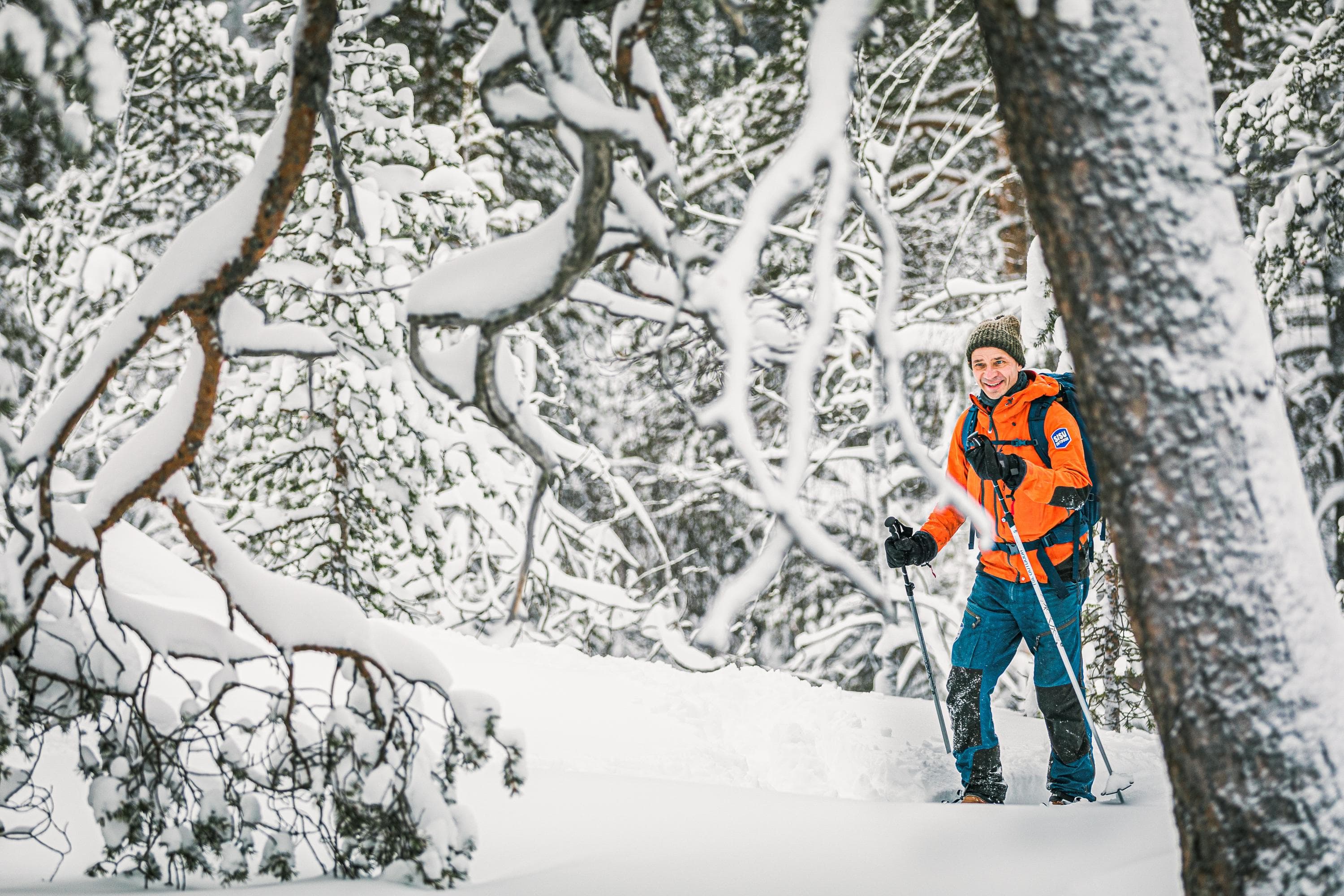1. Watch the weather forecast
Check the snow and ice conditions at your destination before going and take a look at the weather forecast for the next few days. Also check the number of daylight hours in advance, as the quickly falling darkness makes it difficult to travel and prepare the campsite.
If you travel to a destination by car, make sure that the car has appropriate tyres for the season to avoid getting stuck on the first hill. A weekend trip might surprise you if there is no snow when you go and it gets colder during the trip.
2. Anticipate and equip yourself
Prepare carefully for a winter trip. It is a good idea to assess in advance what kinds of hazards or accidents you might encounter and how to deal with them. Also pack a first aid kit in your backpack.
Rapidly changing weather and darkness may surprise a hiker who has not prepared adequately. Rain and wind will make you cold quickly, unless you wear sufficiently warm clothing and weather-appropriate shoes.
The ice is can be treacherous in early winter. Even later, there will be many areas of open water, especially in flowing waters.
Weather conditions can be severe and change in an instant, especially in the north. You should compare your own resources and fitness against the prevailing weather conditions and turn back or change your plan if it feels like the right decision. Help is far away if you get in trouble.
Make a plan B in case you need it and tell your loved ones about your plans.
3. Wear weather-appropriate clothing and shoes
Wear enough clothing for a winter trip but don’t use too warm clothes to avoid getting sweaty. Dressing in layers is a great idea. Also bring warm clothes for breaks and dry socks. Use clothing to ensure that your peripheral body parts (head, hands and feet) remain warm. Headwear prevents body heat from escaping.

4. Bring enough food and drink
You can use a camping stove to cook quickly without depending on firewood at campsites, which can be wet and catch fire slowly. Food and drink will freeze in cold temperatures, so bring a thermos flask and bring food that can be warmed up or that will not freeze.

5. Prepare for snow and cold
Snow changes the terrain, and shapes you saw in the summer will look completely different under a layer of snow. Route markers may disappear under frost and snow. It is harder to travel through snow than in the summer, and it will consume a lot of energy. Storms, fog and slippery conditions make it difficult to travel in nature. There is no winter maintenance on most hiking trails maintained by Metsähallitus.
Accessories and equipment go in the backpack
- Your phone’s battery will drain faster in freezing temperatures: don’t rely on it 100%. Please note that there will be no phone reception everywhere. Especially in remote areas and in the north, there are many large areas with weak signal.
- You should always bring a paper map. Check the campsites and structures along your route in advance on Retkikartta.fi, where you can also locate yourself if necessary.
- Fire-making tools should be protected from moisture, or they will be useless.
- Bring along a head torch.
You should also ask nature centres for up-to-date information about the destination.
Read more

